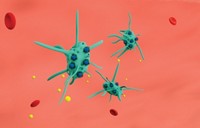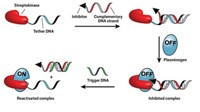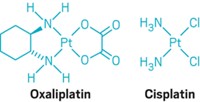Advertisement
Grab your lab coat. Let's get started
Welcome!
Welcome!
Create an account below to get 6 C&EN articles per month, receive newsletters and more - all free.
It seems this is your first time logging in online. Please enter the following information to continue.
As an ACS member you automatically get access to this site. All we need is few more details to create your reading experience.
Not you? Sign in with a different account.
Not you? Sign in with a different account.
ERROR 1
ERROR 1
ERROR 2
ERROR 2
ERROR 2
ERROR 2
ERROR 2
Password and Confirm password must match.
If you have an ACS member number, please enter it here so we can link this account to your membership. (optional)
ERROR 2
ACS values your privacy. By submitting your information, you are gaining access to C&EN and subscribing to our weekly newsletter. We use the information you provide to make your reading experience better, and we will never sell your data to third party members.
Biological Chemistry
DNA Conjugates Deliver Transcription Factors Into Cells
Drug Discovery: New method could lead to therapeutic use of the powerful proteins
by Stu Borman
April 30, 2015
| A version of this story appeared in
Volume 93, Issue 18

Transcription factors control how cells work because they activate specific genes to produce proteins. If used as drugs, the factors could be equally powerful by boosting underperforming cellular activities or turning on genes to treat medical conditions or diseases.
But delivering transcription factors to specific cells or tissues without toxic side effects has proven difficult. Now, bioengineer Niren Murthy of the University of California, Berkeley, and coworkers demonstrate how to safely smuggle transcription factors into liver cells using a method that could also work for a wide range of other cell types.
The Murthy group’s concept involved targeting transcription factors to specific cell-surface receptors on liver cells that would shepherd the cargo into cell compartments called endosomes. The factors would then break out of the endosomes so they could enter the cytoplasm and then the nucleus, where they could perform their gene-activation magic.
To make the magic happen, the researchers designed and synthesized DNA-assembled recombinant transcription factors, or DARTs (Nat. Mater. 2015, DOI: 10.1038/nmat4269). A DART has a set of three major components that can bind the transcription factor of choice, deliver it to endosomes in a specific cell type, and then break apart endosomes to give the factor access to the nucleus.
The researchers tested the technique by injecting DARTs into mice that had been given a dose of acetaminophen sufficient to cause liver damage. The DARTs delivered a transcription factor called nuclear erythroid 2-related factor (Nrf2) directly to the liver cells, where it turned on protective genes that prevented liver injury.
These DARTs contained a short DNA sequence that binds Nrf2. To this DNA strand, the researchers attached hydrophobic alkyl chains that are protected by acid-sensitive linkers and galactose end-caps. Masking the hydrophobic alkyl chains prevents them from disrupting membranes in nontarget cells, which could cause side effects. The galactoses also allow the DARTs to bind to receptors on liver cells and then scoot into liver-cell endosomes. Once inside, the acidic environment breaks the acid-labile linkers. This unmasks the hydrophobic alkyl chains, allowing them to disrupt endosome membranes by a surfactant-like process. Endosome disruption releases DARTs into the cytoplasm and then the nucleus, where they activate antioxidant and anti-inflammatory genes that protect against liver damage.
José Manautou of the University of Connecticut, an expert on liver toxicity who has studied Nrf2 activation, comments that the technique seems powerful for deterring liver toxicity following acetaminophen administration. But he points out that the mice were treated with DARTs only an hour after administration of acetaminophen—sooner than would be practical for addressing most cases of acetaminophen poisoning in people. It remains to be determined, he says, if DARTs will work as well if administered later, when they might need to reverse liver damage, not just prevent it. Nevertheless, it’s “a novel and promising technology that warrants further evaluation,” he says.
The modular structure of DARTs makes it possible to customize them to carry other transcription factors besides Nrf2 and target other types of cells besides liver cells by changing the DNA strand and end-caps, respectively. Murthy says his team is improving DARTs’ efficacy and testing them in mice with chronic liver disease in hopes of moving them to clinical trials.





Join the conversation
Contact the reporter
Submit a Letter to the Editor for publication
Engage with us on Twitter